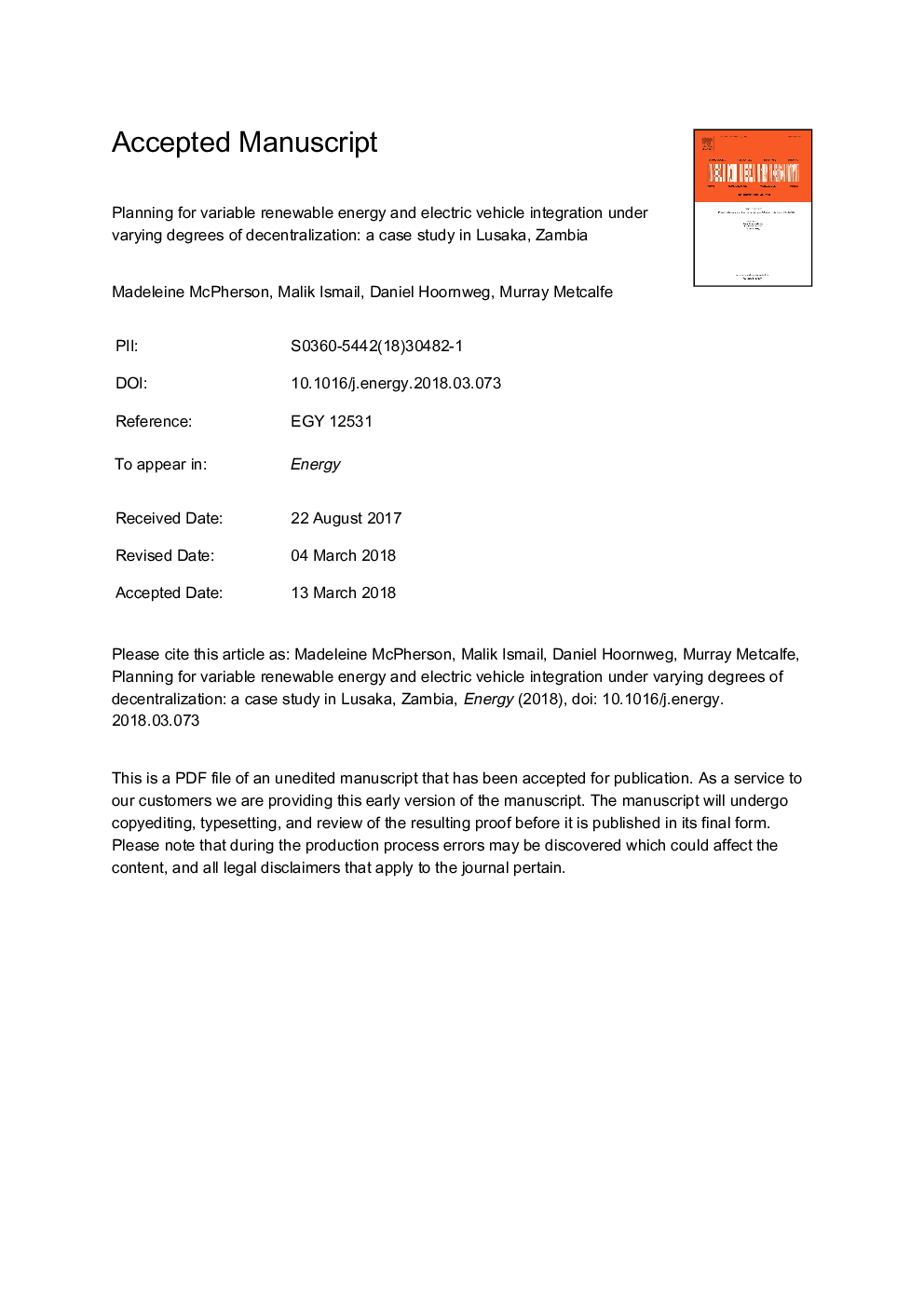| Article ID | Journal | Published Year | Pages | File Type |
|---|---|---|---|---|
| 8071755 | Energy | 2018 | 44 Pages |
Abstract
High urbanization rates, decentralized solar photovoltaic growth, and transportation electrification are changing the electricity planning landscape across Sub-Saharan Africa. This paper explores the operational implications of variable renewable energy and electric vehicle integration at the city scale. A production cost dispatch model is applied to Lusaka, Zambia's capital, whose largely hydro-based electricity system is currently facing shortfalls due to population and economic growth and climate change. The results demonstrate that variable renewable energy penetration and decentralization are important levers for managing greenhouse gas emissions, while the choice of electric vehicle charging policy has significant cost implications. Due to Zambia's flexible hydro assets and potential pumped hydro storage capacity, large penetrations of centralized solar photovoltaic energy can be integrated with low curtailment rates, regardless of electric vehicle charging policy. The high curtailment rates (>10%) and increased greenhouse gas emissions associated with non-export solar PV penetrations greater than 35% can be mitigated with flexible loads, such as electric vehicle charging, that is strategically shifted to coincide with high-resource periods of the day. Without active electric vehicle charging management, large peaking capacity is required to satisfy demand spikes. Conversely, system-optimized vehicle-to-grid charging eliminates the need for additional storage infrastructure thereby mitigating system costs.
Related Topics
Physical Sciences and Engineering
Energy
Energy (General)
Authors
Madeleine McPherson, Malik Ismail, Daniel Hoornweg, Murray Metcalfe,
